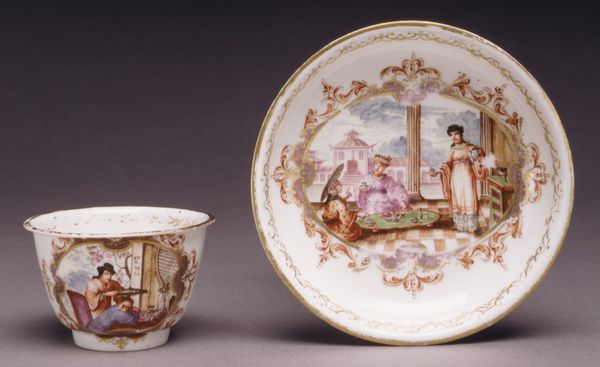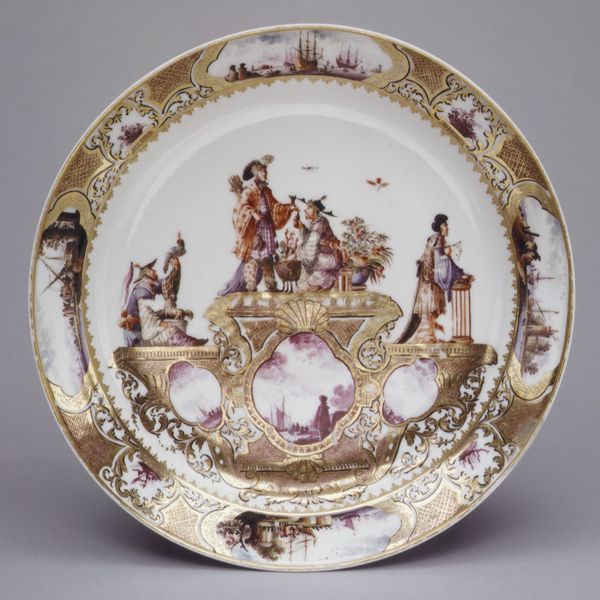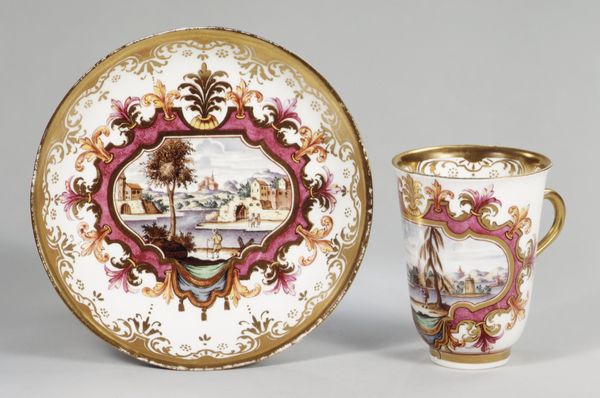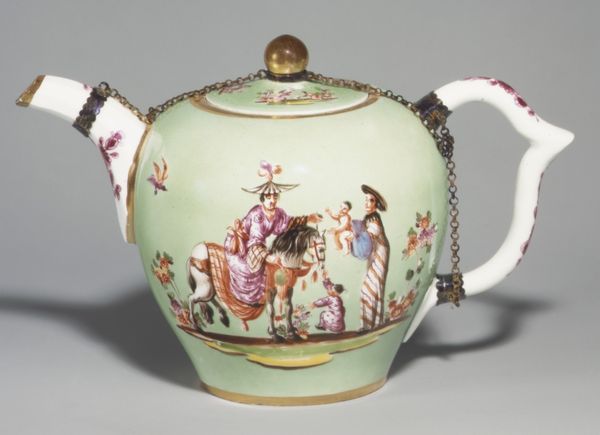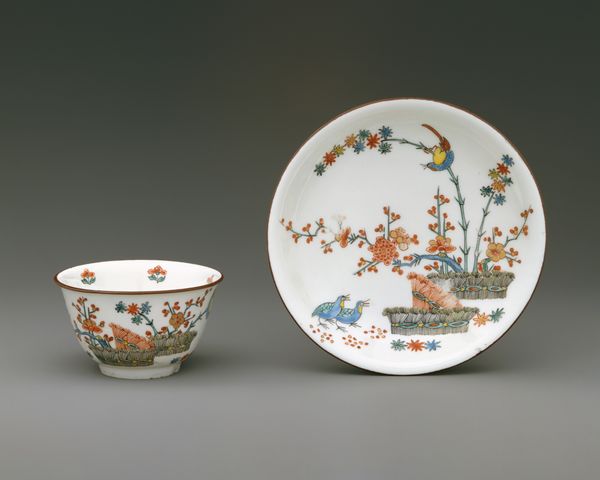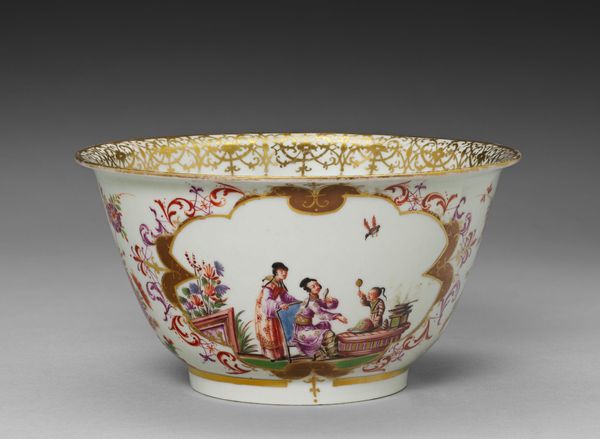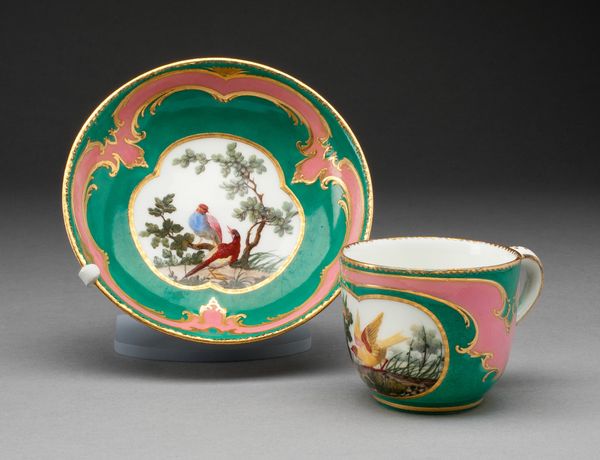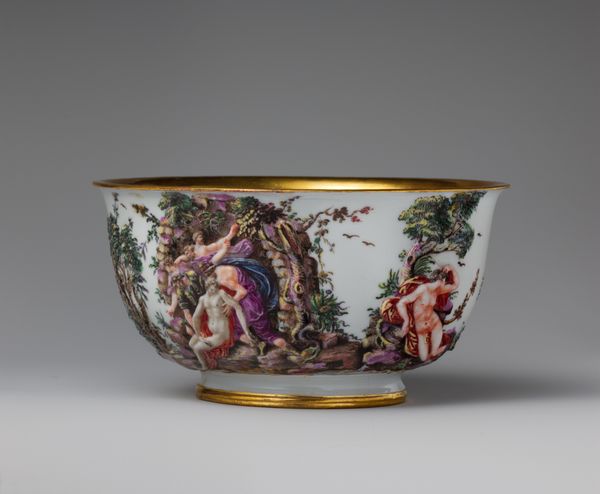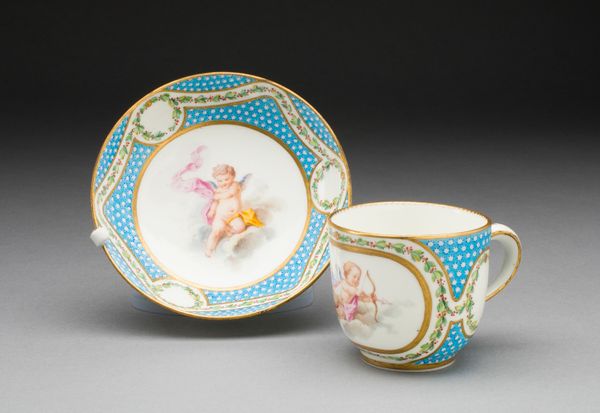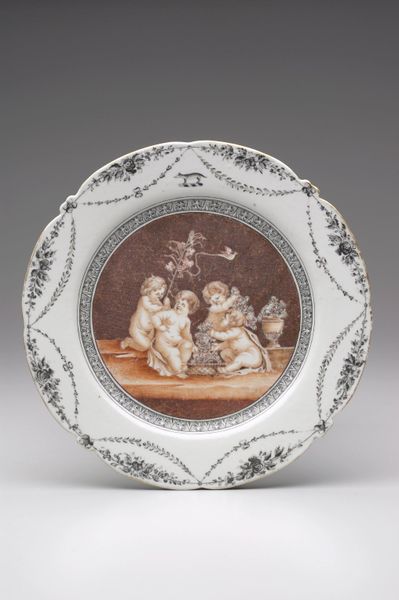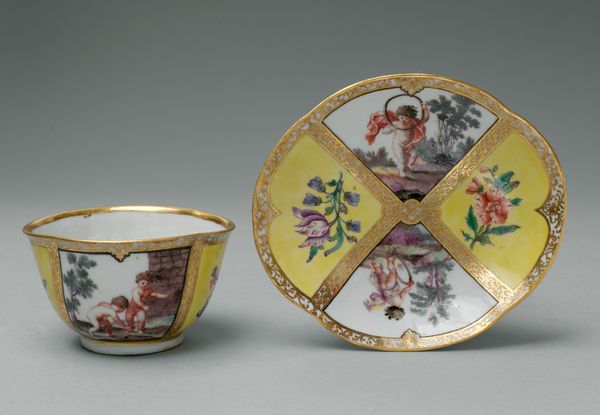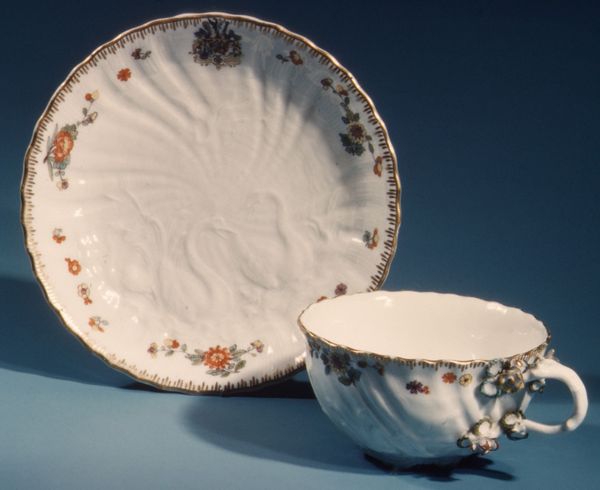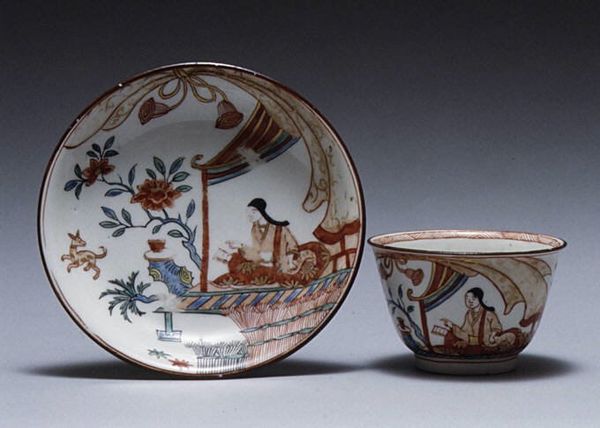
Dimensions: Cup (.1): H. 1 3/4 in. (4.4 cm); W. 3 1/8 in. (7.9 cm) Saucer (.2): Diam. 5 in. (12.7 cm.)
Copyright: Public Domain
Editor: We're looking at a "Cup and Saucer" made in Bristol, England in 1774. The pieces are earthenware with painted and glazed decoration. I'm really struck by the imagery—it feels like a classical allegory rendered in miniature. What do you make of it? Curator: From a formalist perspective, the composition orchestrates a compelling visual interplay. Consider how the gilded edges frame the central tableau on both the cup and saucer, creating a contained, almost gem-like space. Editor: So, you're focusing on the arrangement and presentation of the artwork itself, apart from the narrative being depicted? Curator: Precisely. Observe the figures. On the saucer, their arrangement isn't merely illustrative; it is structural. The verticality of the standing figures— juxtaposed against the central monument—organizes the visual field and our eye traces these vertical vectors across the shallow depth of the plate. Notice too, the limited color palette – how does that influence your perception of the object as a whole? Editor: The muted colors definitely contribute to its elegance, lending a sense of refined taste, perhaps designed for an elite consumer? And how the gilt trim suggests affluence without overpowering the delicacy of the painted scene. Curator: Indeed. Moreover, the mirroring effect between the saucer and the cup reinforces a structural unity. Motifs, like the gilded swags and classical figures, reappear, solidifying a sense of compositional wholeness across the set. Does noticing these mirrored compositions alter your interpretation of this work? Editor: I think so, the mirroring makes me consider these as related but distinct compositions rather than identical. It reframes my sense of their relationship as a set. Curator: Exactly, this object is designed as much for aesthetic contemplation as it is for functional use. Reflecting on its inherent structure can give clues as to how it might have been originally designed. Editor: That's given me a lot to consider about design, craft, and visual language. Thanks!
Comments
No comments
Be the first to comment and join the conversation on the ultimate creative platform.
